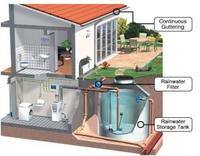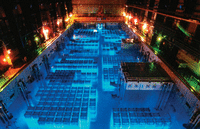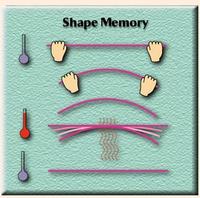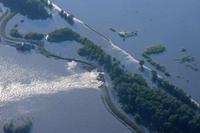-
A nano method to clean polluted water
Decontaminating polluted waste water costs millions, but a new discovery by scientists at the University of Brighton could result in huge savings as well as delivering safer, cleaner water
-
-
Collecting rainwater could save U.S. residents $90 million a year

Simply collecting rainwater could save U.S. residents millions of dollars each year on their water bills and drastically cut down on water consumption; a new study by the Natural Resources Defense Council examined the potential cost-savings in eight U.S. cities and found that residents could collectively save $90 million or more annually
-
-
Japan considers referendum to end nuclear power
Lawmakers in Osaka, Japan are currently mulling over whether to abandon nuclear power all together following the catastrophic nuclear accident at the Fukushima Daiichi atomic energy plant
-
-
Study: No direct link between fracking, groundwater contamination
Hydraulic fracturing (fracking) involves the high-pressure injection of water, sand and chemicals into a shale seam, which causes the rock to shatter, releasing natural gas; preliminary findings from a study on the use of hydraulic fracturing in shale gas development suggest no direct link to reports of groundwater contamination
-
-
Nuclear waste recycling for better nuclear power generation

Researchers aim to produce safe nuclear fuel that can be 80 percent recycled, compared to the current 1 percent; these fourth generation nuclear power systems can lead to a reduction of the amount of high-level, long-lived nuclear waste to a tenth of what it is today, while energy output can increase hundredfold
-
-
Groundwaterin some parts of U.S. susceptible to radium contamination
A recent U.S. Geological Survey (USGS) study found that groundwater in aquifers on the East Coast and in the Central United States has the highest risk of contamination from radium, a naturally occurring radioactive element and known carcinogen
-
-
Lawmakers blast DHS for problems with chemical facility security program
At a recent Congressional hearing, lawmakers blasted DHS officials for their failure to follow through with a program designed to secure chemical facilities in the United States
-
-
Invisibility cloak to protect buildings from earthquakes
Scientists show that by cloaking components of structures with pressurized rubber, powerful waves such as those produced by an earthquake would not “see” the building — they would simply pass around the structure and thus prevent serious damage or destruction
-
-
Advances in the use of photocatalysts to help keep water clean safe
Photocatalysis involves the acceleration of chemical reactions using the power of light; researchers experiment with different types of photocatalysts to reduce nitrates in water
-
-
Preventing earthquake-induced soil liquefaction to protect buildings
When earthquakes occur, buildings can shift or fall; often, the failure is because of soil liquefaction, a phenomenon that occurs when loose, water-saturated soils lose strength in response to the sudden shaking from an earthquake, causing the soil to behave like a liquid; scientists have come up with a way to minimize liquefaction
-
-
Shape-memory alloys for earthquake-resistant structures

To improve the performance of structures during earthquakes, researchers have been investigating the use of “smart” materials, such as shape-memory alloys, which can bounce back after experiencing large loads
-
-
Nuclear accidents pose “essentially zero risk" to public health
A new study by the U.S. Nuclear Regulatory Commission (NRC) concluded that there is only a “very small” risk to public health if a severe nuclear accident were to occur in the United States
-
-
A solution for troubled ITER nuclear fusion reactor
Nuclear fusion offers the promise of endless energy supply – but the technology requires extremely high temperatures of up to 150 million degrees in order to form plasma (ionized gas); since no material can withstand these temperatures, the fuel (a mixture of two isotopes of hydrogen: deuterium and tritium) must be kept trapped in extremely energetic magnetic fields; the magnets that produce these fields are composed of giant coils of superconducting cables; so far, the superconducting cables designed for the European ITER fusion reactor have been unable to withstand the planned 40,000 to 60,000 charge cycles
-
-
Local officials oppose “unacceptable” levee ratings

In recent years as part of an effort to bolster the nation’s flood protection infrastructure, the Army Corps of Engineers has analyzed and declared more than 200 levee systems across the country as “unacceptable,” resulting in a firestorm of criticism from local officials
-
-
Bill would allow DHS to impose cybersecurity standards
A bill before Congress would significantly increase the power of DHS to monitor the cybersecurity practices of industries and services which are part of the U.S. critical infrastructure
-
More headlines
The long view
Water Wars: A Historic Agreement Between Mexico and US Is Ramping Up Border Tension
As climate change drives rising temperatures and changes in rainfall, Mexico and the US are in the middle of a conflict over water, putting an additional strain on their relationship. Partly due to constant droughts, Mexico has struggled to maintain its water deliveries for much of the last 25 years, deliveries to which it is obligated by a 1944 water-sharing agreement between the two countries.
Trump Is Fast-Tracking New Coal Mines — Even When They Don’t Make Economic Sense
In Appalachian Tennessee, mines shut down and couldn’t pay their debts. Now a new one is opening under the guise of an “energy emergency.”
Smaller Nuclear Reactors Spark Renewed Interest in a Once-Shunned Energy Source
In the past two years, half the states have taken action to promote nuclear power, from creating nuclear task forces to integrating nuclear into long-term energy plans.
Keeping the Lights on with Nuclear Waste: Radiochemistry Transforms Nuclear Waste into Strategic Materials
How UNLV radiochemistry is pioneering the future of energy in the Southwest by salvaging strategic materials from nuclear dumps –and making it safe.
Model Predicts Long-Term Effects of Nuclear Waste on Underground Disposal Systems
The simulations matched results from an underground lab experiment in Switzerland, suggesting modeling could be used to validate the safety of nuclear disposal sites.
